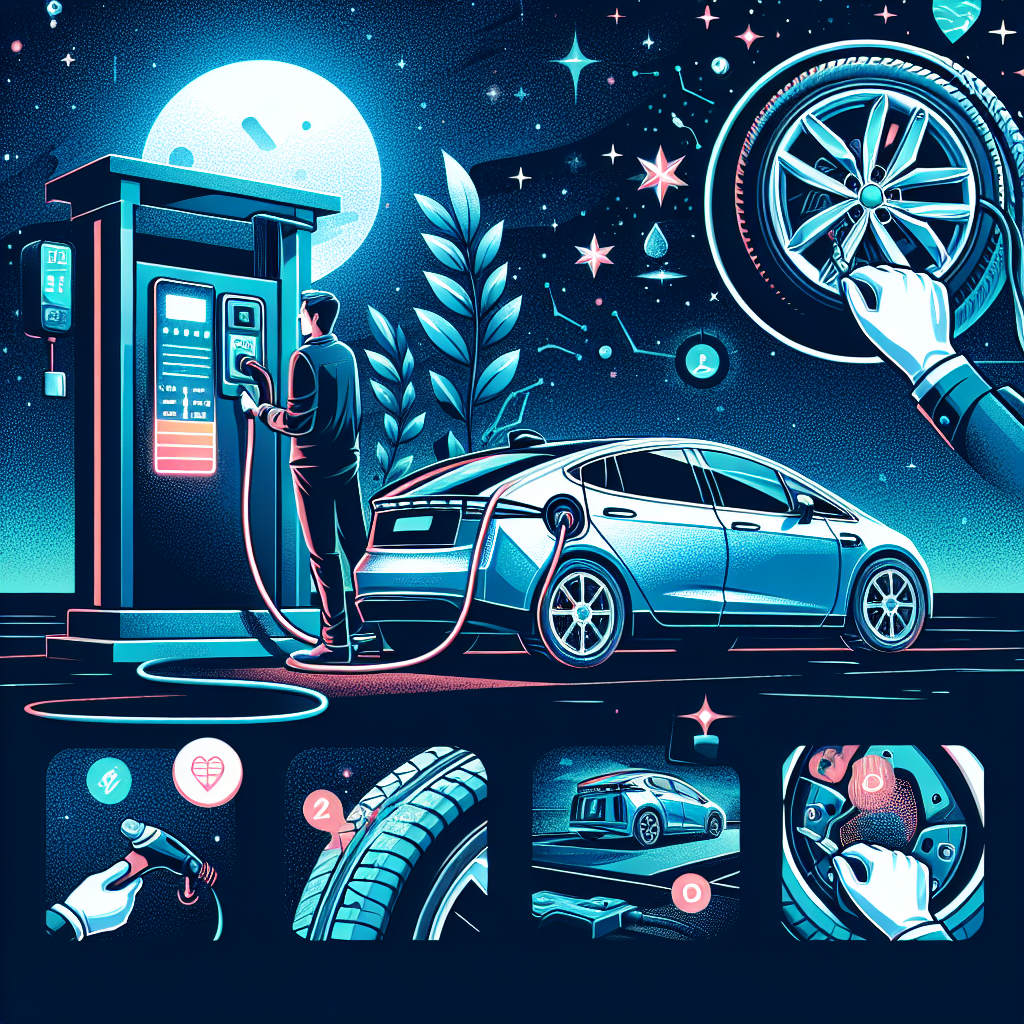
Australia’s transition to electric vehicles (EVs) has been swift and, at times, chaotic. A fresh problem – widespread failures and maintenance issues with fast-chargers supplied by Tritium- has exposed gaps in procurement, supply-chain resilience and after-sales support that threaten confidence among EV owners and could slow broader adoption.
What’s happening
Over recent months, EV drivers and fleet operators across Australia have reported unreliable fast-charging sessions, out-of-service units and long delays for repairs. Many of these issues are traced to chargers manufactured by Tritium, a Brisbane-founded company that once dominated a large share of the Australian DC fast-charging market. At its peak the company claimed to supply hardware to roughly three-quarters of the national fast-charging network.
Once touted by federal leaders as world-class infrastructure, some Tritium units have been experiencing repeated faults. Frustrations among EV owners – particularly those depending on the network for long-distance travel or commercial operations – have prompted an unusually sharp public critique, including social media mockery that underlines the loss of trust.
Rise: Tritium grew quickly, securing significant contracts for public fast-charger deployments across Australia and internationally.
Restructuring: The company closed its Queensland factory in 2023 and shifted manufacturing overseas, including plans for production in the United States.
Insolvency and acquisition: In 2024 Tritium was declared insolvent. Indian company Exicom subsequently acquired Tritium’s assets.
Aftermath: Customers who own or operate deployed chargers are now grappling with maintaining them as original support arrangements unravel or become uncertain under new ownership.
Why this is a national problem
- Concentration risk: Heavy reliance on a single supplier for a large share of fast-chargers leaves the network vulnerable if that supplier falters.
- Maintenance and service: Chargers need regular software updates, spare parts and prompt servicing. When the manufacturer’s supply chain or service organisation is disrupted, downtime increases and roadside support becomes patchy.
- Consumer confidence: Unreliable charging undermines the convenience case for EVs. For many prospective buyers, the charge network’s reliability is as important as vehicle range.
- Economic and equity implications: Fleets, regional users and long-distance travellers are disproportionately affected; unreliable infrastructure risks hampering business operations and regional access.
Who’s affected
- Private EV owners relying on public fast-charges for trips.
- Fleet operators who depend on predictable charging windows.
- Charging station owners and retailers that host chargers but do not manufacture them.
- Governments and planners who have invested in or subsidised charging infrastructure.
Where responsibility lies
Responsibility is shared among multiple parties:
- Manufacturers: for build quality, spare parts, software maintenance and warranty fulfilment.
- Charging network operators: for day-to-day upkeep, monitoring and vendor management.
- Site hosts (retailers, councils): for immediate interface with customers and local maintenance contracts.
- Governments: for procurement standards, consumer protection measures and contingency planning.
Immediate and medium-term responses
Short-term actions to reduce impact and restore confidence:
- Mapping and transparency: publish status maps showing working, degraded and out-of-service chargers so drivers can plan routes.
- Service continuity plans: network operators should communicate contingency plans, alternative chargers and expected repair timelines.
- Warranty and support enforcement: pursue obligations under existing contracts and warranties; ensure owners have access to spare parts and software updates.
- Rapid-response maintenance: mobilise technicians and local supply chains for fast turnarounds.
Medium/longer-term reforms to prevent recurrence:
- Procurement standards: governments and large buyers should require stronger service-level agreements (SLAs), performance bonds and spare-part guarantees when procuring chargers.
- Vendor diversification: avoid over-reliance on a single supplier; encourage competition and interoperability.
- Local capability: consider incentives for local manufacturing, assembly or long-term service hubs to improve resilience.
- Regulatory oversight: introduce minimum reliability and maintainability standards, and clearer pathways for consumer redress.
- Right to repair and documentation: ensure operators have access to technical documentation and software needed to maintain chargers independently if manufacturers fail.
What this means for EV adoption in Australia
A reliable, readily available charging network is central to Australia’s electrification ambitions. Incidents like the Tritium disruption risk pausing momentum by eroding public trust. But the situation also offers policymakers and industry an opportunity to harden the system – improving procurement practices, supporting service ecosystems and ensuring charging infrastructure is built with resilience and longevity in mind.
Practical advice for EV drivers
- Plan routes with redundancy: identify multiple charging options on longer trips.
- Use apps and community forums to check real-time charger status.
- Report faults promptly to network operators and log details: location, charger ID, fault messages and timestamp.
- For repeated failures at the same site, seek contact information for the site host or the network operator to escalate.
Conclusion
The troubles with Tritium-supplied fast-chargers have laid bare systemic weaknesses in Australia’s EV charging rollout: concentrated supplier risk, inadequate long-term service arrangements, and insufficient contingency planning. Resolving these issues will require coordinated action from manufacturers, network operators and government – but it is essential if Australia is to keep public confidence in the EV transition. The recent disruption should act as a catalyst for stronger procurement practices, local servicing capacity and regulatory frameworks that prioritise reliability and consumer protection. If addressed decisively, the country can emerge with a more resilient and trusted charging network that supports the next phase of EV uptake.
FAQs
Q: Are Tritium chargers unsafe?
A: Reports to date have primarily described reliability and availability problems rather than systemic safety failures. If a charger displays error messages or sparks, users should move away from the unit and report the incident to emergency contacts and the site host. Site owners and network operators retain responsibility for ensuring equipment is safe.
Q: Who is responsible for fixing faulty chargers?
A: Responsibility depends on contracts. Typically the network operator or charger owner is responsible for arranging repairs and maintenance, but manufacturers often provide spare parts, firmware updates and back-end support. If a manufacturer becomes insolvent, the legal responsibilities depend on the terms of sale and warranty agreements.
Q: What should I do if I’m stranded because a fast-charger is down?
A: Contact the network operator via the app or the service number on the charger, and seek alternative chargers nearby. If you are unable to charge and are in a risky location, contact roadside assistance or emergency services as appropriate.
Q: Will this issue slow EV adoption in Australia?
A: It could affect consumer confidence if left unresolved. However, strong policy responses and improved service models can restore trust. Many drivers buy EVs for cost, environmental and performance reasons; a resilient charging network is a critical enabler of continued uptake.
Q: What can governments do to prevent similar problems?
A: Governments can require robust SLAs, performance bonds, local maintenance facilities, and diversification of vendors in procurement contracts. They can also introduce minimum reliability standards and mechanisms for consumer redress.
Q: How can I check if a charger is reliable before I rely on it?
A: Use charging network apps that show real-time status and recent availability history. Community forums and local EV groups can also provide on-the-ground insights into charger reliability.
About EV Evolution
EV Evolution is the leading online platform dedicated to Australian electric vehicle owners and enthusiasts. We foster a vibrant community, delivering essential EV news and insights, and enhancing user engagement through our innovative, AI-powered chatbot for dynamic discussions. Our mission is to empower Australian electric vehicle owners and enthusiasts by fostering a vibrant, AI-driven online community that connects, informs, and advances the nation’s electric vehicle landscape.




